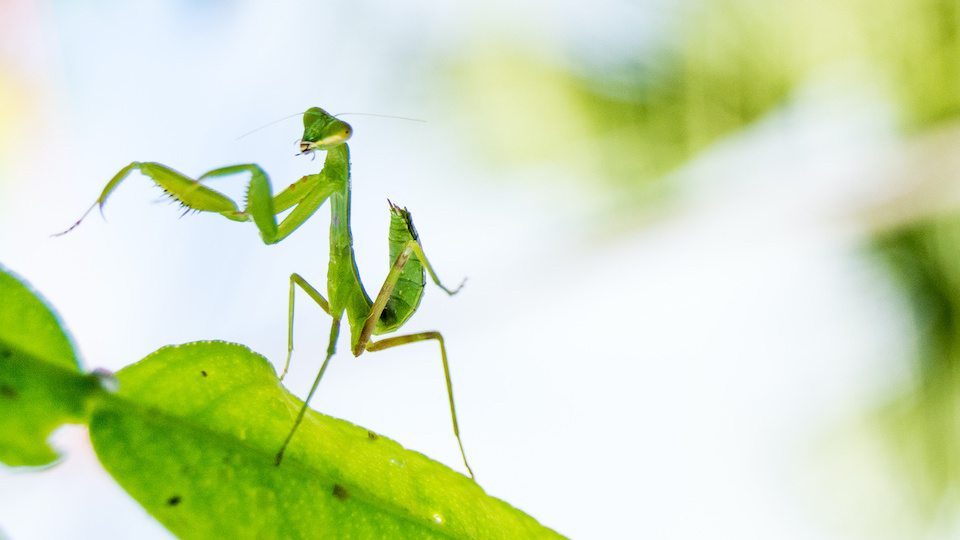Often, the word pest is used to describe anything that crawls, slithers, hops, flies or otherwise invades our neat little worlds or annoys us. We seldom realize that some of these “pests” are actually beneficial, especially for our garden. It is these beneficial pests that we should strive to attract to our yard and garden. Here is a look at those that make our garden a better place and how to attract them.
If you have ever taken a leisurely stroll through your yard and garden, you are likely walking amidst an entire world that you don’t see – perhaps you choose not to see it or ignore it because it makes you uncomfortable. Spiders weaving intricate webs that rival any work of human art, bees, and wasps gingerly kissing your daylilies and sunflowers and butterflies dancing ballet to the rush of the wind. Without the butterflies, bees, and wasps, there would be no pollination, and the spiders do a great job keeping harmful insects at bay. You know, the ones that eat your plants?
At the soil level and below, there is yet more life – worms hard at work, adding natural compost and ants aerating the soil by digging tunnels that carry water, oxygen, and nutrients to plant roots. They also hasten up the decomposition of organic material like dead insects, leaves, and other organic material that fertilizes the plants.
Beneficial insects
There are several beneficial insects that may provide a long-term sustainable pest control solution by preying on bugs that can do a great deal of damage to your garden and backyard plants. Here are just some of the benefits that helpful insects can bring to your garden:
Beneficial insects can be just as effective as chemical pesticides without the damage and threat that chemical pesticides can cause. This non-toxic method of protecting your plants allows you to grow organically without having to worry about the risk of pesticides. When you apply chemical pesticides to your garden, they not only wipe out the bad guys but also the good guys, the natural predators that are so necessary for a healthy garden.
Here are some exceptionally beneficial insects that you should attract to your garden and how you can do it.
- Ladybugs – Ladybugs consume more than 5,000 plant-eating aphids in their lifetime. They also eat whiteflies, fleas, and Colorado potato beetles. If you want to attract ladybugs to your garden, you should plant dill, dandelion, and common yarrow.
- Praying mantis – These strange-looking insects may seem scary, but they are very valuable to your garden. They will munch on many things, including caterpillars, moths, beetles, and crickets. To invite praying mantises to your garden party, plant more shrubs, grasses, cosmos, marigolds, and dill.
- Spiders – Although spiders only live for one year, they eat aphids, roaches, mosquitoes, fruit flies, and more. Spiders like tall plants and plenty of mulch.
- Ground beetles – Ground beetles will dine on Colorado potato beetles, cutworms and slugs. These helpful pests will be plentiful in your garden if you plant evening primrose and clover.
- Minute pirate bugs – Minute pirate bugs will eat spider mites, insect eggs, aphids, thrips, and caterpillars. You will have more minute pirate bugs in your garden if you plant plenty of caraway, fennel, alfalfa, and spearmint.
Other “pests” that you should attract to your garden
Here are some other creatures that are excellent to have in your garden.
- Bats – Bats don’t only eat mosquitoes but also moths whose caterpillars are a threat to crops. In fact, just by eating corn earworm moths, bats save U.S. corn farmers almost one billion dollars per year. One of the best ways to attract more bats to your yard is to set up a bat house.
- Salamanders, frogs, and toads – These amphibians love leaf-eating pests and may eat up to 100 insects per night. Frogs and toads love beetles, flies, moths, caterpillars, and other insect larvae, along with slugs and snails. Salamanders also eat mosquitoes and ticks. If you want to attract more amphibians to your yard, it is important to create a welcoming habitat. This includes moisture, maybe even a small pond, shade, foliage cover, and even frog or toad houses.
- Dragonflies – Both dragonflies and damselflies are expert aerial hunters that love to dine on mosquitoes, gnats, and midges. If you want to attract more of these “pests” to your yard and garden, installing a pond is an excellent place to start.
-Susan Patterson




